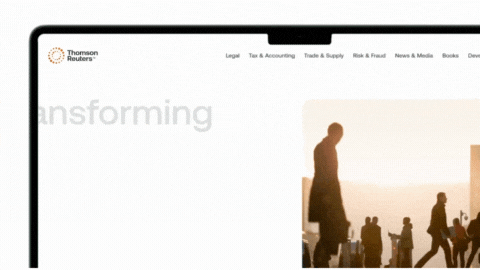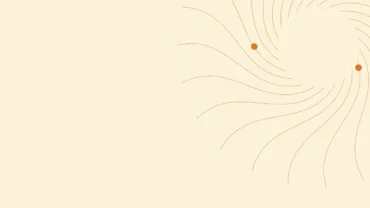A common type of intellectual property (IP) infringement involves copyright, which protects “creative” work. This includes literature (running the gamut from blog posts to newspapers to novels), music (both sound recordings and compositions), visual arts (photos, paintings, and illustrations), motion pictures, theatrical works (scripts, stage designs, and productions), and architecture.
Under copyright law, the creator of the work is considered to be its author, unless the author assigns the copyright to another person or entity, such as a publisher or record label.
For works made for hire, the employer or commissioning party is typically considered to be the author, though a few creators of work-for-hire properties have later sued the commissioning party for partial or full copyright ownership. For instance, there have been multiple suits filed against Marvel and DC Comics by original creators of Spider-Man and the X-Men, which resulted in out-of-court settlements with the creators or their estates.
Jump to ↓
Case study of copyright litigation
Overlaps in intellectual property
How to handle copyright litigation for your firm

CoCounsel Legal
AI lawyers swear by: Trusted content, expert insights, and an all-in-one solution with ISO/IEC 42001:2023 certification
See it in action ↗What defines copyright
U.S. copyright dates back to the Constitution, which grants Congress “power to promote the progress of Science and useful Arts, by securing for limited times to Authors and Inventors the exclusive Right to their respective Writings and Discoveries.”
What constitutes “limited times” has changed over the years. Length of copyright for a particular work depends on several factors, including whether the work has been published (offered to the public by any means) and, if so, the date of first publication.
Currently, for works created after January 1, 1978, copyright protection lasts for the life of the author, plus 70 years. For an anonymous/pseudonymous work or a work made for hire, copyright is 95 years from first publication or 120 years from the year of its creation, whichever expires first. For works first published prior to 1978, terms vary but in general, copyright currently endures for 96 years from publication. Thus, works first published in 1927 will enter the public domain on January 1, 2023.
Copyright ownership of an artistic creation gives the owner the rights to:
- Reproduce the work in any medium;
- Create derivative works based upon the work (sequels, for example);
- Perform or display the work publicly. This could entail screening a movie, running a stage production, or putting recorded music on a streaming service.
It’s also important to know what’s not covered by copyright protections. This includes:
- Logos, business names, or brand names (covered by trademarks);
- Processes, designs, or systems (covered by patents);
- Work considered “owned” by the public (e.g., presidential speeches, text of federal legislation, or federal or state court decisions); and
- Ideas and concepts (for example, a musician can’t copyright the key of C major).
Copyright infringement
Copyright infringement occurs when a copyrighted work is distributed, copied, publicly displayed or performed, and/or used to inspire a derivative work without the copyright owner’s permission.
A copyright owner can sue in civil court, seeking an injunction to prohibit the defendant’s further unauthorized use of copyrighted materials, as well as to recover damages. The U.S. Department of Justice can also make the case for criminal copyright infringement under specific conditions (see below).
What are elements of a copyright infringement claim?
A plaintiff alleging copyright infringement in a civil lawsuit must establish two essential elements in court.
- The plaintiff owns a valid copyright.
Plaintiff must demonstrate that the work is original, and that it exists in a “tangible medium of expression.” In Feist Publications Inc. v. Rural Tel. Serv. Co. (1991), the U.S. Supreme Court held that “[o]riginality is a constitutional requirement” in copyright law, one that “requires independent creation plus a modicum of creativity.” And the copyright must be still valid (e.g., a publisher cannot claim copyright of a public domain work like Romeo and Juliet or A Christmas Carol).
The plaintiff also establishes that it has registered its copyright to make its copyright publicly known. A copyright holder usually deposits with the U.S. Copyright Office one copy (if unpublished) or two copies (if published) of the work to be registered, paying a $435 fee. The deposited work becomes the property of the Library of Congress.
Note that while copyright holders don’t need to register their works, and that copyright on the work still exists if the work is unpublished and unregistered, they will need to register the work in order to file an infringement lawsuit.
2. Defendant infringed upon plaintiff’s copyright.
Upon establishing ownership, the plaintiff must prove that the defendant violated their exclusive rights to the work. Sometimes this is a simple matter of showing the court evidence of the defendant’s unauthorized display of a copyrighted film, or a pirated edition of a book they offered for sale on Amazon.
When it comes to the unauthorized creation of derivative work, establishing infringement is a greater challenge. Here, the plaintiff must show enough substantial similarities exist between its copyrighted work and the defendant’s. If the plaintiff can demonstrate that the defendant had access to its work before creating their own (such as the defendant hearing a copyrighted song, then writing a derivative song inspired by the plaintiff’s), that can benefit their case.
Criminal copyright infringement
Copyright infringement may be prosecuted as a criminal offense if the alleged infringer meets two additional requirements.
1. The defendant acted willfully.
Prosecutors need to show the court that the defendant acted willfully, not inadvertently. This means the defendant chose to copy or distribute a copyrighted work knowing that it was doing so without the copyright holder’s permission. For example, someone who issued an unauthorized album of Taylor Swift songs could not claim they were unfamiliar with the original work or didn’t know the work in question was under copyright.
2. The defendant sought financial gain or had another commercial impetus.
Prosecutors need to show that a defendant intended to make money or some sort of gain from their copyright infringement. What matters is intention: whether they actually made a profit is immaterial.
Criminal copyright infringement can also be established by prosecutors citing an alternative reason to commercial advantage. For example, if a defendant made a work available for free on a computer network, knowing that the copyright owner intended to distribute it commercially in the future, they could be charged with criminal infringement.
What is the most common copyright infringement?
Today, among the most common types of infringement are copying (whether it’s via emails, sharing works on document servers, or physical copying). Particularly in the digital age, it’s far easier for a copyright infringer to violate copyright via duplication—it’s often simply a matter of clicking and pasting text or putting an MP3 file on a piracy website.
What happens if copyright is breached?
If a court finds that the plaintiff’s copyright has been breached, the plaintiff may be awarded civil damages, with fines levied against the defendant typically ranging from $750 to $30,000 per work infringed. A court may also require the defendant to compensate the plaintiff for court costs and attorneys’ fees. The defendant will also typically receive an injunction barring them from continuing the infringement in the future, upon further penalties.
Should the defendant be found to have engaged in willful copyright infringement, fines may increase to $150,000 or more per work infringed. And it also may result in criminal penalties that include imprisonment for up to five years and fines of up to $250,000 per offense.
Copyright litigation
Plaintiffs should be aware that there’s a “statute of limitations” on copyright infringement. In most cases, a plaintiff has three years after discovering potential copyright infringement in order to file a lawsuit. If the infringement is ongoing, the start-off date is when the most recent copyright infringement occurred. Thus, if someone is using a plaintiff’s photos without permission on their website, the start-off date would be when the most recent photo appeared.
As per a 2017 AIPLA report, the average cost of litigating a copyright infringement case in federal court from pre-trial through the appeals process is $278,000, and some cases will take over a year to litigate. That said, in December 2020, Congress passed the CASE Act, which created the Copyright Claims Board with the intention of reducing time and costs of litigating smaller copyright infringement claims.
The Claims Board is legislated to handle copyright infringement claims whose maximum statutory damages are $15,000 per work and $30,000 per claim. The Claims Board doesn’t issue injunctions but will order a defendant to cease infringement if both parties agree.
Case study of copyright litigation
In Twentieth Century Fox Film Corp. v. MCA Inc. (1983), the Ninth Circuit Court found MCA, owner of Universal Studios’ TV show Battlestar Galactica, guilty of infringing on the copyright of Twentieth Century Fox’s Star Wars.
Star Wars, which premiered in 1977 and was a massive box office hit, inspired rival studios to greenlight a number of competing science fiction projects. One was Universal’s Battlestar Galactica, a TV show which aired from 1978 to 1980.
Twentieth Century Fox believed the show’s premise and characters were too similar to those in Star Wars and filed suit for copyright infringement. While the Central District Court of California ruled in MCA’s favor, agreeing with MCA’s defense that the two works were similar only on a very broad level (“good versus evil in space”), upon appeal the Ninth Circuit found that MCA had infringed upon Twentieth Century Fox’s copyright.
The Ninth Circuit held that there were enough similarities between the works that “do in fact raise genuine issues of material fact as to whether only the Star Wars idea or the expression of that idea was copied.” Among the 34 similarities cited by the Ninth Circuit were similar characters (a friendly robot injured in battle), plot devices (destruction of an entire planet), and sets (both shows had scenes in a musical cantina).
The case was remanded and then reportedly settled before further proceedings took place. By that time, Battlestar Galactica had already been canceled. The property was remade in the mid-2000s, presumably with copyright issues ironed out with Twentieth Century Fox.
Overlaps in intellectual property
Copyright is one segment of a broader category of intellectual property. The other main segments of IP are patents, trade secrets, and trademarks.
Copyright falls midway on the spectrum in terms of length of protection. It lasts far longer than patents, which have a two-decade lifespan, but it’s shorter than trademarks, which are in theory immortal if they’re renewed every 10 years. Trade secrets are both potentially infinite but also end once the information in question is made public.
Copyright shares traits with patents and trademarks. Trademarks protect names, designs, and images used to distinguish the holder in the public marketplace. Patents, by contrast, may never be used in a product for sale—they are meant to protect the holder’s invention from others’ infringement. Copyright works both sides of this divide: it’s meant to primarily apply to works in the public market, where litigation cases are concerned, but it also extends to cover unpublished, private works.
There can be overlap in litigation. A party filing for copyright infringement may also file for trademark infringement if the infringed-upon property has aspects used for items sold in the marketplace. To go back to Star Wars, Twentieth Century Fox could have sued for both copyright and trademark infringement if someone screened the film without permission while also using names and images of characters, which had been trademarked to sell toys, in advertising the unauthorized distribution.

AI news and insights
Industry-leading insights, updates, and all things AI in the legal profession
Join community ↗How to handle copyright litigation for your firm
Copyright litigation can be a time-consuming task, as it may entail a lengthy and costly trial. Yet given that revenue from a copyrighted work may be essential to the livelihood of a creative artist, it’s often worth shouldering the legal burden in order to combat infringement.
That said, there are ways to make the process more cost-efficient and less complex. The use of technology can improve a plaintiff’s research, speed up discovery, and enable attorneys to craft a more compelling and thorough argument in court.
A service like Practical Law is an all-in-one tool with practicing attorney-editors offering expert guidance to help you through a copyright litigation case.

Practical Law
Get expert how-to guidance, clear explanations of current law, and time-saving tools and templates to give you a better starting point
View all plans ↗






